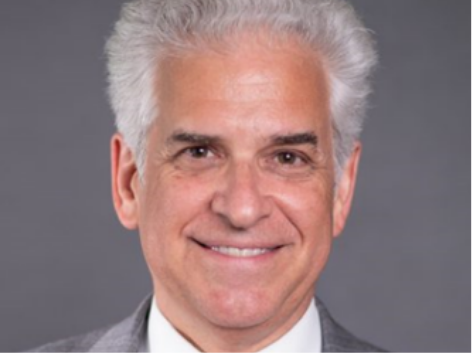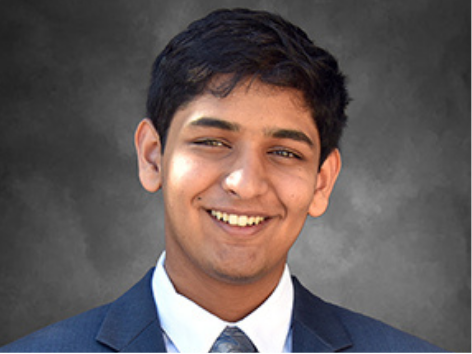Facing the future of bioterrorism
Biotechnology has developed at an astounding rate over the first twenty years of the twenty-first century. Emerging biotechnological tools have become cheaper and more accessible than ever before, and less expertise is necessary to use those tools effectively. Amateur biologists can now accomplish feats that would have been impossible until recently for even the foremost experts in top-of-the-line laboratories. The iGEM competition is a great example of this phenomenon in practice: a synthetic biology competition in which amateur scientists compete with one another to build biological systems and operate them within living cells. Similarly, CRISPR, a scientific technique that enables the manipulation of DNA and genetic engineering, can be used in the high-school classroom as an illustrative practical example of biology. There exists a new and growing community of “biohackers” who use novel biotechnology tools to modify their own bodies in a variety of ways. As biotechnologist Drew Endy at Stanford University put it, many years ago hackers would hack computer code, but now they are hacking the code for life.1Conversation with Drew Endy, a member of the bioengineering faculty at Stanford University in California, in 2018. Thus, biotechnology capabilities are becoming democratized.
In general, this evolution of biotechnology will bring with it an amazing array of changes to our societies, our economies, and our security. The growing biotech revolution will have as great an impact on our way of life as the communications and information revolution. Chronic diseases will be mitigated, human life spans will be extended, and the global economy will be increasingly driven by biological inventions and processes. A new understanding of epigenetics could usher in an era of highly personalized medicine, and gene drives could wipe mosquito-borne diseases like malaria from the planet. One day, engineered living materials, built through synthetic biology, might grow to suit specific architectural needs and heal when faced with wear and tear. Neuroenhancement technology could optimize human performance: increasing learning speed, combatting neurological diseases, or even assisting soldiers by boosting their awareness and decision-making on the battleground. A new generation of scientists will build a suite of as-yet-undiscovered technologies, transforming the world in radical ways.
However, greater access to cheap but powerful biotechnology tools—and a reduced need for expertise in operating those tools—also is making it easier for malicious actors to utilize that technology for ill. Terrorist groups could use synthetic biology to craft bioweapons, using data to manufacture dangerous pathogens or modifying easily accessible pathogens to make them more virulent. At present, there are still some barriers to entry that prevent such actors from operating with free reign, as widespread access to certain pathogens, tools, and data is still limited. But these barriers will only continue to recede over the next decade. In evaluating the future of terrorism and counterterrorism, one must consider: How should the United States and its allies prepare to face the growing threat of bioterrorism?
Bioterrorism is not a new phenomenon, though past cases have been limited in scope. In the 1990s, a Japanese cult known as Aum Shinrikyo attempted to engineer an aerosolized strain of anthrax or, in other words, a strain of anthrax capable of infecting people through inhalation. The cult’s members were ultimately unsuccessful in their attempts to do so and resorted to releasing sarin gas (a chemical weapon, rather than a biological one) in Tokyo’s subway system on March 20, 1995, which killed thirteen people and sickened thousands of others. Their goal was to release an infectious pathogen in the hopes of causing an epidemic and stimulating a world war that would have allowed them to seize power. They were stymied by a lack of expertise—though cult members included former biologists and some with medical credentials.
A decade before, in Oregon, a cult known as the Rajneeshees spread salmonella in the hopes of incapacitating opposing candidates in local government elections. Cult members ultimately caused food poisoning in more than seven hundred and fifty people, marking the largest bioterrorism incident in US history. In 1998, al-Qaeda publicly declared its intent to pursue weapons of mass destruction, including bioweapons. The organization later conducted training courses on the use of such weapons and recruited biologists to help develop a bioweapons program. In the wake of the attacks on the United States on September 11, 2001, anthrax-laced letters were sent by mail, killing five people.
… Greater access to cheap but powerful biotechnology tools—and a reduced need for expertise in operating those tools—… is making it easier for malicious actors to utilize that technology for ill.
As these cases illustrate, terrorists have already demonstrated a willingness to use biological weapons, without regard for the indiscriminate danger those weapons pose to the entire globe. As COVID-19 has shown, diseases can cross borders, particularly in the globalized world we live in today. A bioweapon released in Tokyo could spread across the world in short order, even if the initial attack is limited in scope (i.e., targeted at a specific group or starting with a relatively small volume of pathogen). These potential large-scale effects of attempted bioterrorism have been mitigated in the past by terrorists’ lack of expertise, and the inherent challenge of using biotechnology to make and release dangerous pathogens. Now, as people gain greater access to this technology and it becomes easier to use, the challenge is easing. Further, COVID-19 has shown that pandemics can have an extraordinary political impact, preying upon and worsening existing fractures in society and among nations. To terrorists, who conduct violence to achieve political aims, this reinforces the fact that a bioweapon could serve their purposes. Thus, incidents of bioterrorism soon will become more prevalent.
Given the broad scope and scale of this growing threat, the United States should take a series of actions to mitigate the risks, without unduly stunting the growth of the biotechnology field. To date, bioterrorist attacks have been low-risk, high-impact events. While they have been extremely rare, their frequency will only increase as will their ramifications. However, overregulating the spread of biotechnological tools could stunt innovation and the profound potential of this increasingly important sector. Furthermore, existing methods of preventing bioterrorism may no longer be effective. The government could previously monitor the purchase of expensive and dangerous biotechnology tools and the laboratories that owned them in large quantities. This is no longer possible to the same degree when such tools are increasingly cheap, widespread, and usable in a garage. The FBI is currently attempting to address this risk by building relationships with the iGEM community and with life scientists so that they can report suspicious behavior. These efforts should continue, but are wildly insufficient, since some bioterrorists may have minimal contact with the larger community of biologists and biology hobbyists.
The release of a bioweapon by a terrorist, if left unchecked, could spread throughout the globe, just as a naturally occurring pandemic would. Thus, one major step that the United States should take is to establish improved responses to disease outbreaks, particularly learning from COVID-19. This should include building a larger stockpile of PPE and establishing a set of clear step-by-step actions to be taken in the event of an attack. Building resilience in this fashion will not prevent bioterrorism, but it will mitigate its effects, and may slightly disincentivize utilizing bioweapons to cause terror. Beyond this, the United States should secure its laboratories and the data within, as terrorists could leverage that knowledge to build bioweapons. For example, new technology allows pathogens to be synthesized from the data describing their genetic sequences. In a recent controversial study, scientists published a methodology that would allow horsepox virus, a virus very similar to one that causes smallpox, to be synthesized. This research was conducted with a noble goal: understanding how the horsepox virus could be used as a potential treatment for cancer. However, it had significant dual-use implications. Research like this should not be banned outright, but the United States should establish norms to evaluate whether it is worth the risk before such research is conducted, and then ensure that it is conducted and the results published in the most secure ways. Replicability is an important part of science, but the general public should not be able to replicate the most dangerous experiments. Where building resilience would reduce the impact of a bioterror incident, restricting access to dual-use methodologies will reduce the likelihood of one occurring in the first place.
Finally, enforcing domestic standards is not enough. Pathogens spread across borders, and the spillover effects of even a targeted bioterrorist attack could kill many unintended victims. Thus, the United States must work with other countries to protect against the bioterrorist threat, monitor the emergence of new viruses and bacteria that could be leveraged for a bioweapon, limit access to the most dangerous pathogens (and data associated with those), and build global response networks in the event of an attack. Importantly, this collaboration should emphasize working with allies, but should also include adversaries: if China or Russia remain unregulated, an attack within their borders would still affect the United States and its allies.
Emerging biotechnology will result in new medicines and medical techniques, a greater understanding of how pathogens function and spread (and thus a better understanding of how to combat them), a healthier populace, innovative new capabilities that could transform daily life, and greater engagement with the biological sciences. While ensuring that these benefits are maintained, the United States and its allies and partners must take logical steps to protect themselves from the worst-case scenarios. The risk of bioterrorism is growing, and the United States must be prepared to face the future.
* * *

Barry Pavel is the senior vice president and director of the Scowcroft Center for Strategy and Security at the Atlantic Council. Prior to joining the Atlantic Council, Barry Pavel was a career member of the Senior Executive Service in the Officer of the Under Secretary of Defense for Policy for almost eighteen years. From October 2008 to July 2010, he served as the special assistant to the President and senior director for defense policy and strategy on the National Security Council (NSC) staff, serving both President George W. Bush and President Barack Obama. Prior to this, Pavel was the chief of staff and principal deputy assistant secretary of defense for special operations/low-intensity conflict and interdependent capabilities. From October 1993 to November 2006, Pavel also led or contributed to a broad range of defense strategy and planning initiatives for both the Clinton and George W. Bush administrations. In this capacity, Pavel supported post-9/11 deterrence policy (including deterrence of terrorist networks and regional nuclear powers); strategies for reducing ungoverned areas; and a long-range planning construct that accounts for trends and “strategic shocks” that could significantly change Department of Defense’s role in national security.

Vikram Venkatram is a Young Global Professional in the Scowcroft Center for Strategy and Security, Forward Defense at the Atlantic Council. He is a recent graduate of Georgetown University’s School of Foreign Service, where he studied Science, Technology, and International Affairs with a minor in Biology. He is also currently a second-year graduate student in Georgetown’s Security Studies Program. Originally from San Jose, California, his main interests lie in biosecurity issues, ranging from pandemic preparedness to emerging biotechnology to environmental security to bioethics.
The authors wish to thank Dr. James Giordano for his review and insights of this paper.
Generously Supported By

Explore “The future of counterterrorism” series
Engage with our series as we continue forecasting the future of counterterrorism
Learn more about the Middle East Programs
Learn more about Forward Defense

Forward Defense, housed within the Scowcroft Center for Strategy and Security, generates ideas and connects stakeholders in the defense ecosystem to promote an enduring military advantage for the United States, its allies, and partners. Our work identifies the defense strategies, capabilities, and resources the United States needs to deter and, if necessary, prevail in future conflict.